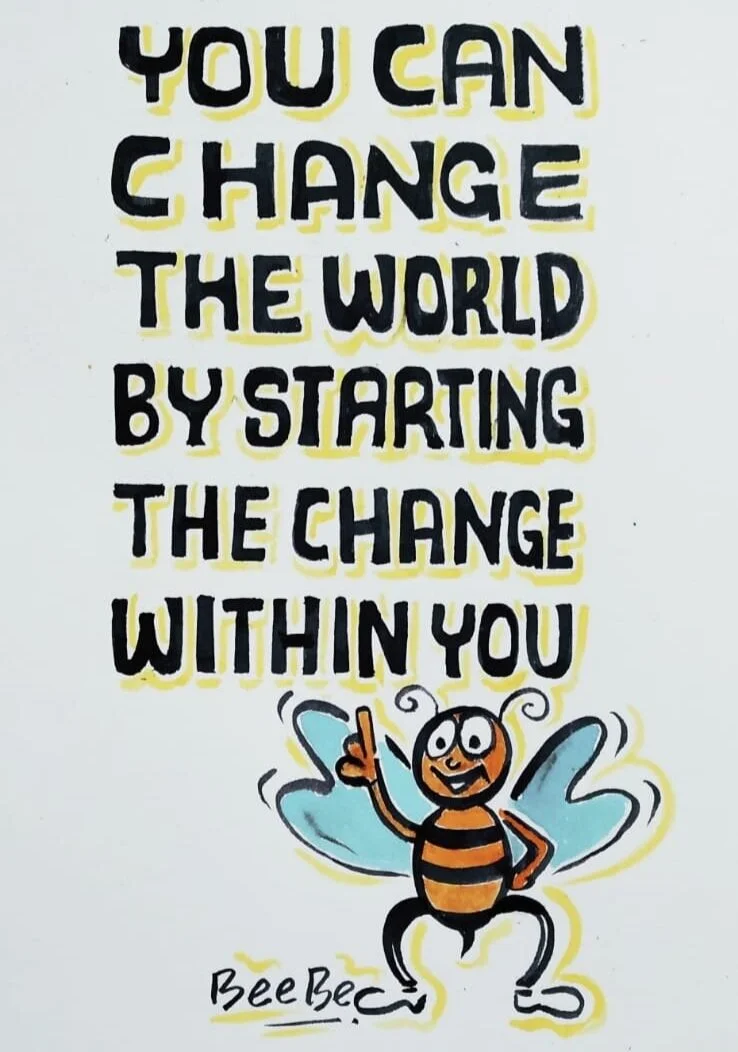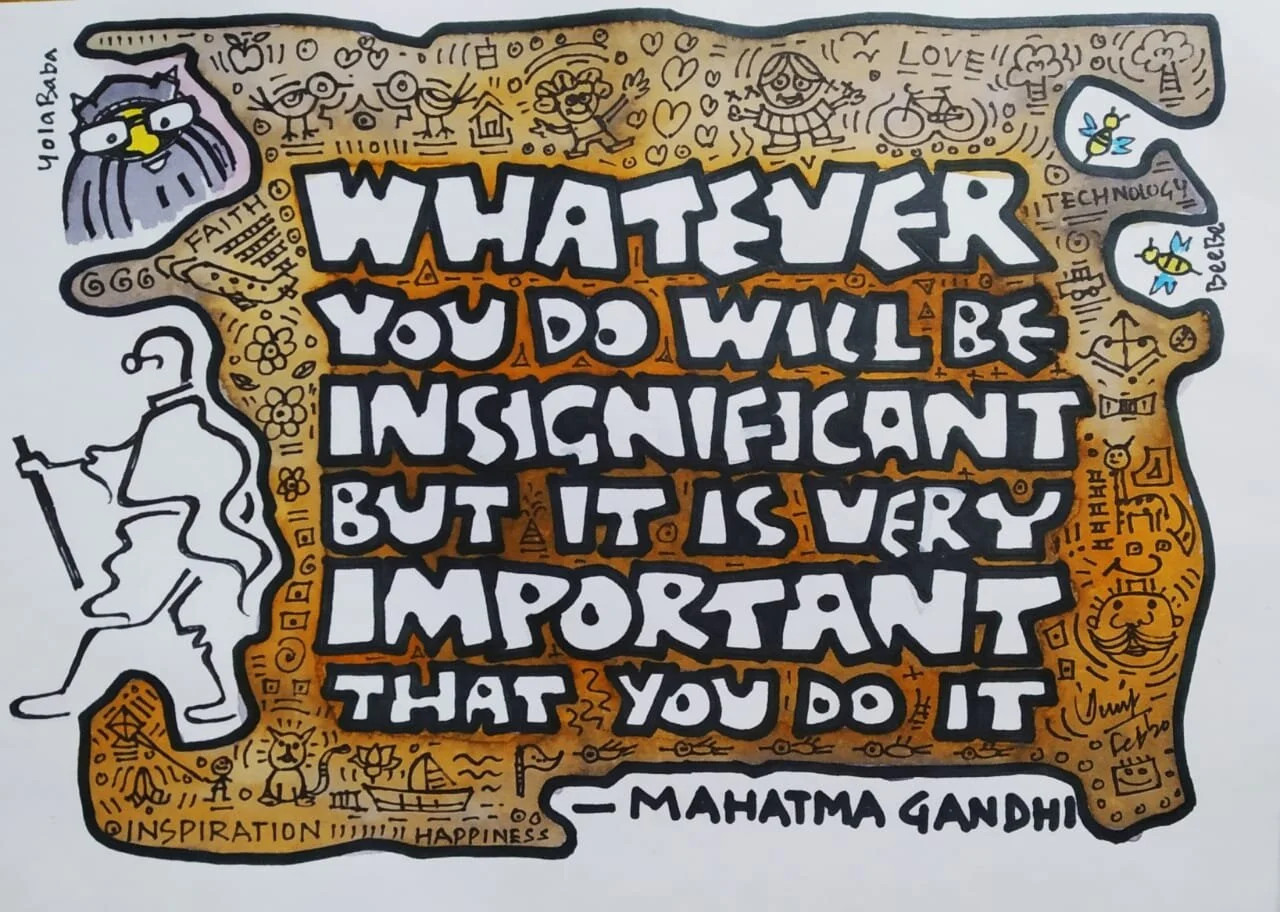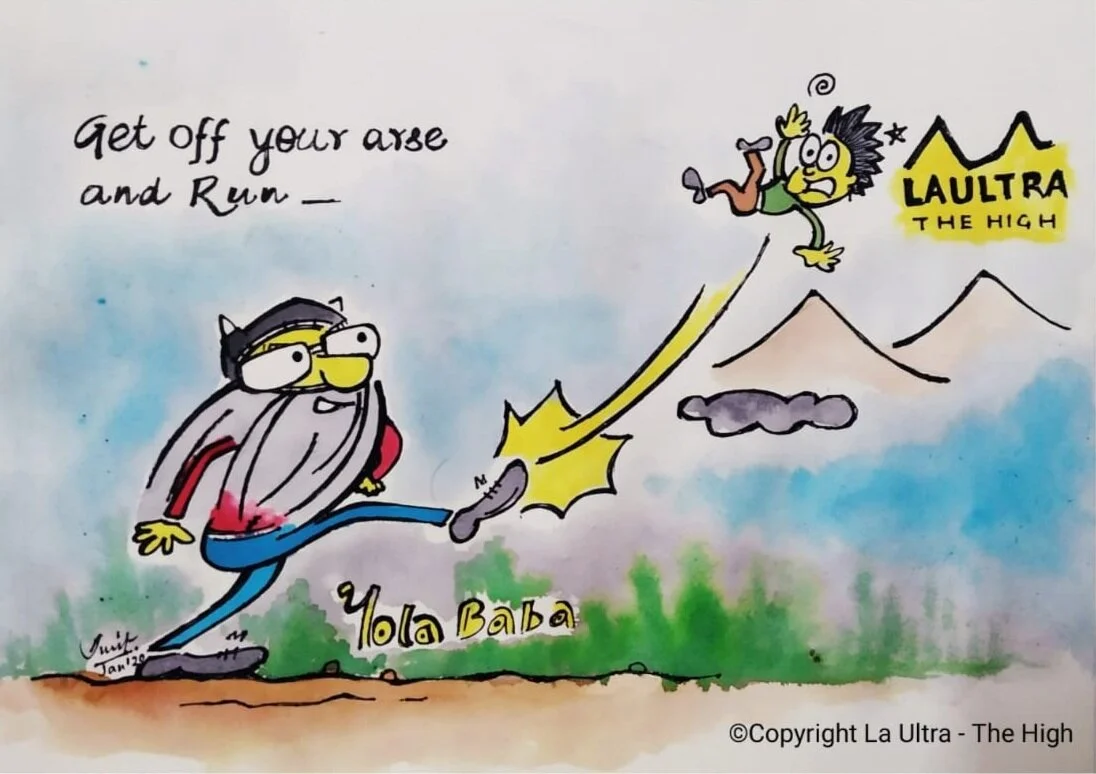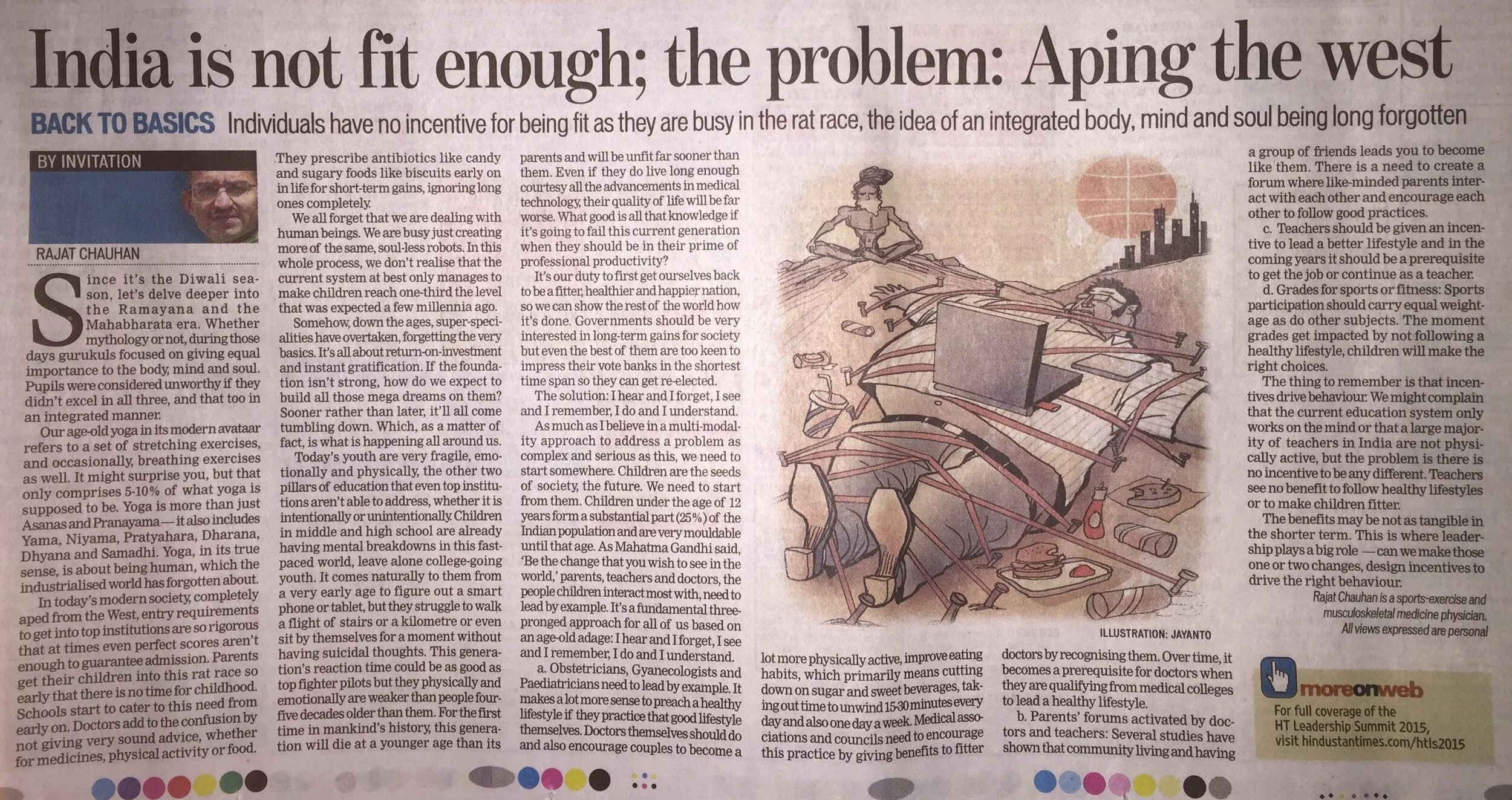Do we know what yoga is?
Is Yoga meant to be done only on one day and is it only limited to some poses? (Art: Amit Artist)
I started this as an updated version of a piece I had written for Hindustan Times as part of HT Leadership Summit - 2015, but it has ended up being pretty detailed. Here is the link for the article I am talking about. India is not fit enough, the problem: Aping the west
It’s best to read along with the 2015 piece but I do want readers to focus on this as it’ll introduce you to things you know but you really don’t.
Credit: Representative image, illustration - Jayanto at Hindustan Times in 2015
Disclaimer: I have no political or religious affiliations.
Yoga, is it merely supposed to be about asanas? Or is it any more?
Patanjali had written Yoga Sutra approximately 2200 to 2500 years ago. After having been almost lost in obscurity for about 700 years, Yoga Sutra only made a comeback about 130 years ago because of Swami Vivekananda’s efforts.
“Yoga is restraining the mind-stuff from taking various forms.”
Pretty deep words there. Over these years though, yoga has been reduced to a set of exercises alone, somewhere down the line losing the essence of yogic life. I guess it’s bound to happen when the materialistic instant gratification western world takes an Indian philosophy they have no clue about, they make of it what they understand. They don’t have the basic foundation like we do. In return, we then pick it up only when it first becomes popular there, simply aping them. We then can’t blame them for having royally messed up one of the most important lessons Indian culture has to give to this world.
“I love your Christ but I hate your Christians because your Christians are unlike your Christ.”
Patanjali had defined yoga as having eight components, or eight limbs. That’s where the word Ashthanga comes from. Asanas and Pranyam are only two of those eight.
It’s on purpose that I have decided to stick with bullet points so each point can sink in rather than terms and meanings being lost in between sentences. Please think for yourself and start making a change, one baby step at a time.
Art: Amit Artist
Yama - The very first component of yogic tradition is about moral ethics of life which generally are missing big time in today’s society. This could be a good starting point for all those trying to preach but simply don’t practice. It might be news to you but all the 5 points of Yama are also part of the five vows which form part of the main doctrine of Jainism. Mahavira walked this earth at least a century before Patanjali is said to have written the Yoga Sutra. Fascinating stuff you learn during lockdown trying to teach your younger son class 9th history. This helps us wonder if Yoga really belongs to a certain religion or is it part of Indian heritage belonging to all of us.
Ahimsa / Non-violence: Did you know that Mahaveer (Jainism) was the first one to talk about this concept in structured format? Buddha was supposedly born 32 years after him. If this was ingrained in people’s minds starting from homes and followed by schools, this world would be a lot peaceful place.
Satya / Truthfulness: I am of the opinion that truthfulness starts with self before we think of others, but sadly in today’s world we start with lying to ourselves. This is then followed to lying becoming the standard procedure in all walks of life.
Asteya / No-stealing: That is fundamental in all religions but it yet again has become integral to all societies today.
Bramcharya / Chastity, marital fidelity or sexual restraint: This one I don’t understand enough as I have two sons and one wife.
Aparigraha / Non-attachment, non-greed, non-grasping, non-possessiveness: To me this is a very basic lesson that we all are aware of but need to be reminded repeatedly.
As soon as you feel attached to something, materialistic or otherwise, you are in trouble. That desire (and for more) is the cause for all the other 4 above mentioned points going for a toss.
Art: Amit Artist
Niyama - This involves virtuous habits, behaviours, observances and attitude towards ourselves. Yes, it always starts from self.
Most say when you think first of yourself it is selfish, that’s utter rubbish. When you only think of yourself, then it’s selfish.
Shaucha / Cleanliness, purity and clearness of mind, speech and body: I repeat, of mind, speech and body. It is not limited to just clearing you immediate surroundings.
Santosha / Contentment, acceptance of others, acceptance of one's circumstances as they are in order to get past or change them, optimism for self:
To me contentment is far more important than happiness which everyone seems to be chasing. Once you accept what you have and where you are, without being greedy, life gets a lot more comfortable. I am not saying don’t do justice to your talent or strive for higher goals, but it definitely shouldn’t be done in the wrong way, by hook or by crook.
Tapas / Persistence, perseverance, austerity: In today’s world we all from the very beginning are told how important and precious we are, from our parents, to our teachers when we come to the new class or an institution till we start failing, to our partners till they have had enough of us, to our bosses at work when they hire us till the point they show us the pink slip.
Failure is simply inevitable, one of the biggest lessons of life. If you aren’t taught early enough how to face failure and rejection, you’ll never be able to stand up when it does happen. You need to learn to persevere. At La Ultra - The High, our tagline is Failing is not a Crime; Lack of Effort is. To me that’s yoga.
Svadhyaya / Study of self, self-reflection, introspection of self's thoughts, speeches and actions: Throughout our lives, from pre-nursery to post-retirement, we all are looking for someone special who’ll understand us and be by our side through our ups and downs.
If we don’t understand ourselves, how do we expect anyone else having the patience to do that. Rather than reaching-out for help, we need to know ourselves and then be ready to reach-in when the need comes, which it definitely will.
Ishvarapranidhana / Contemplation of God or Supreme Being: This is yet a concept I am trying to still figure. The closest I come to even remotely understanding is that there is a Supreme Being. This one I would leave it to you to make what you want of it based on your background and your belief system.
“In the confrontation between the stream and the rock, the stream always wins; not through strength, but through perseverance.”
Asana / yoga postures, physical postures: Everyone is a super expert at this, just that this alone is not yoga.
Pranayama / breath control, restraint or expansion of the breath: There are only two breaths that the society focuses on as milestones. The first and the last breath. Those are inevitable. Why forget about all the breaths we take in between? We need to be mindful of all the breaths as its breath that ultimately keeps us alive. Prana actually means life. I would suggest focus on breathing for a minute at least each hour. Start taking long deep slow breath in and slowly exhaling too. It’ll make you appreciate life a lot more.
It’s important you understand how insignificant you are. But yet the most important.
Pratyahara / withdrawal of the senses: Pratyahara empowers one to stop being controlled by the external world, fetch one's attention to seek self-knowledge and experience the freedom innate in one's inner world. [3] This takes me to the concept of not reaching-out but reaching-in. After all ‘i’ is important. Focus on it. Don’t let the world tell you are being selfish. Be your best friend, and the rest will follow. The idea is to ‘let go’.
“If you get the inside right, the outside will fall into place.”
Pratyahara has 3 gunnas: [5]
Sattva / The illuminating, pure or good quality
Rajas / the quality of mobility or activity
Tamas / the dark and restraining quality
Dharana / Concentration: Fixing the mind means one-pointed focus, without drifting of mind, and without jumping from one topic to another. [4] For me Running, Skipping and Squatting makes it happen. I like to call it RSS. There needs to be no competition with anyone else. It is your journey. Become comfortable with it.
There are 5 states of mind in Dharana: [5]
Ksipta
Vikshipta
Muda
Ekagra
Niruddha: the best state where manas (mind), buddhi (intellect) and ahamkara (ego) are all restrained and all these faculties are offered to the Lord (or whatever that supreme power be) for his service. The final barrier to break to be on this journey of emancipation is manage the ‘i’. i.e. ego .i.e. Ahamkara. [5] Let that ‘e’ ‘go’. Roll away.
That’s why I go to Ladakh every year!
“Enlightenment is ego’s ultimate disappointment.”
Dhyana / Contemplation, reflection, profound, abstract meditation: Lots of folks would confuse Dharana with Dhyana. Let me make an attempt to explain. Dharana for me while running would be about how my body is, my soft landing, my effortless breathing and how beautifully it is in sync irrespective of what pace or distance I am running. Dhyana on the other hand is only about being there, running, totally in sync with the cosmos not thinking about anything else at all.
Samadhi / Absorption, Complete integration: Here I and running are not two different things, we just merge. I wouldn’t claim I have reached to that level a lot but I have. Sometimes I close my eyes while running at even 4 min per km for a few minutes. At first it scares me but then I am just comfortable being. I do the same with my skipping and squatting too. For me it’s these activities, but for anyone else could be whatever else. You have to be your better self, not a copy of whoever else, so find yourself. Be your best you.
Art: Amit Artist
Hence I call myself a student of pain and running, and also an advocate of Get Off Your Arse (GOYA).
References:
https://en.wikipedia.org/wiki/Yoga_Sutras_of_Patanjali (lots has been borrowed from here and I don’t claim to be an expert but then I have shared my understanding of most of it)
Indian History World Developments and Civics, ICSE Class IX, B B Tayal & A Jacob, Avichal Publishing Company
Charlotte Bell (2007), Mindful Yoga, Mindful Life: A Guide for Everyday Practice, Rodmell Press, ISBN 978-1930485204, pages 136-144
Charlotte Bell (2007), Mindful Yoga, Mindful Life: A Guide for Everyday Practice, Rodmell Press, ISBN 978-1930485204, pages 145-151
Inputs by Sawato Mitra
Invited to write this as part of HT Leadership Summit 2015
“When you become a lover of what is, the war is over.”
“Identity is the ego’s religion.”







